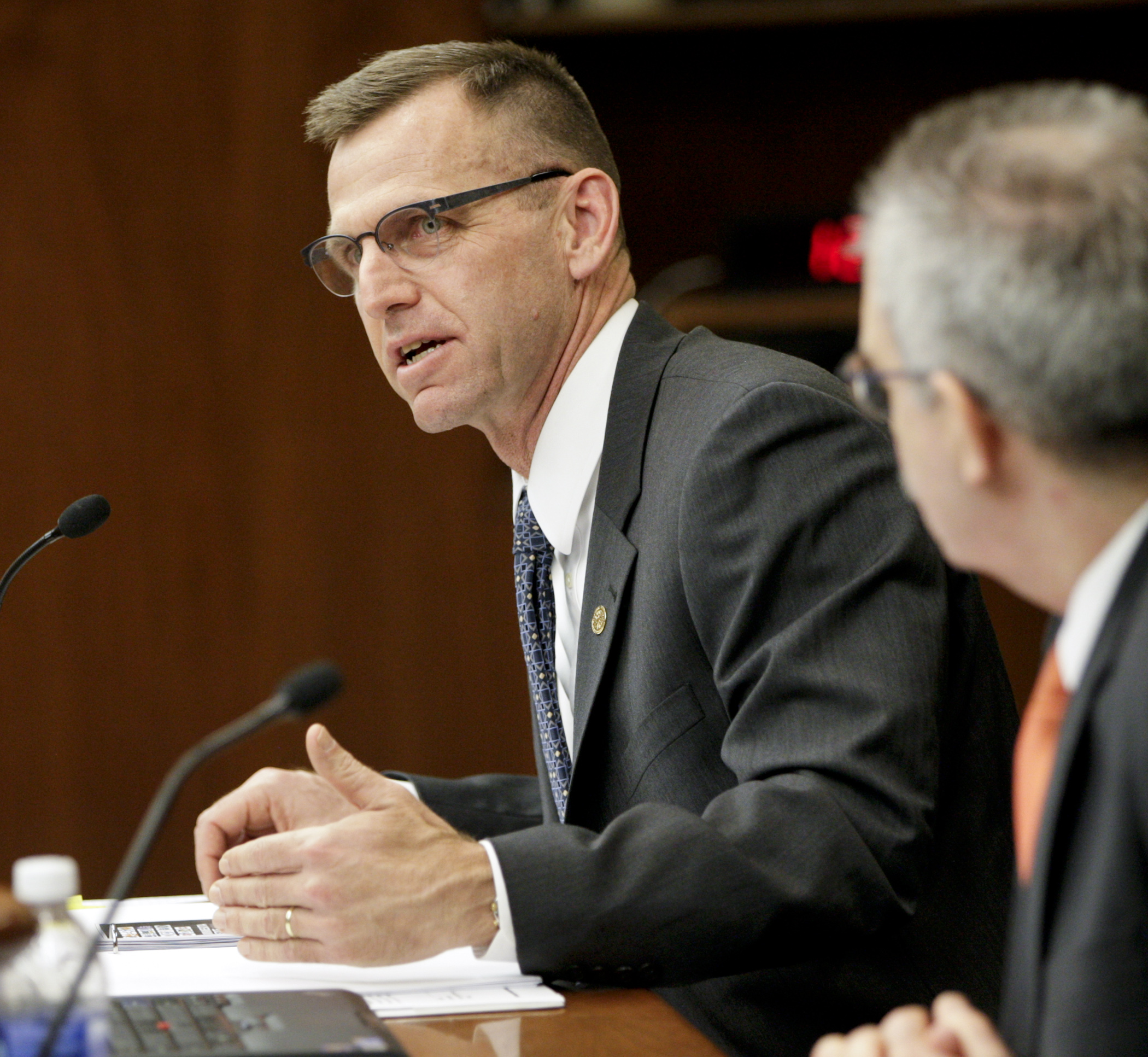MnSCU capital budget request approaches $200 million mark
The Minnesota State Colleges and Universities system educates 58 percent of the state’s undergraduate students and serves more first-generation students, low-income students and students of color than all of Minnesota’s other higher education options combined.
In many cases, it tries to meet the state’s future workforce demands in facilities that need updating.
Such is the basis for a $198.5 million capital budget request MnSCU officials shared Tuesday with the House Capital Investment Committee. No action was taken.
“The facilities on our campuses play a critical role in preparing students with the foundational and technical skills Minnesotans need,” said Elise Ristau, a member of the MnSCU Board of Trustees. “The building provides the laboratories, the classrooms, the simulations and the study space needed to prepare students for the future and help keep Minnesota prosperous.”
Of the system request, $156.5 million would be state financing: $84 million for 13 major projects, of which just one is a new building; $67.5 million for Higher Education Asset Preservation and Replacement (HEAPR); and $5 million for demolition. The remaining $42 million for the 13 major projects would come from system coffers.
Since 1992, according to a legislative brief from the nonpartisan House Research Department, state capital appropriations for MnSCU and the University of Minnesota have required that the higher education entities pay one-third the costs of each non-HEAPR project.
Major project requests this year include:
- $18.8 million for a health and science addition at St. Paul College;
- $18.5 million for student health and academic renovations at St. Cloud State University;
- $8.6 million for health care renovation at South Central College in North Mankato;
- $7.7 million for transportation and emerging technologies renovation at Dakota County Technical College in Rosemount; and
- $826,000 for a laboratory renovation at Northland Community and Technical College in East Grand Forks.
Brian Yolitz, associate vice chancellor for facilities, said state funding has previously been sought for all of the requested major projects.
Yolitz said 50 percent of this year’s HEAPR requests focus on “the building envelope” such as doors and windows, while one-third is for things like boilers, air conditioners, air-handling units and other energy efficiency measures. Electrical and plumbing challenges and code compliance issues would be addressed with the remaining funds.
 Brian Yolitz, associate vice chancellor for facilities, answers a question during a Jan. 27 overview of MnSCU’s bonding request in the House Capital Investment Committee. Photo by Paul Battaglia
Brian Yolitz, associate vice chancellor for facilities, answers a question during a Jan. 27 overview of MnSCU’s bonding request in the House Capital Investment Committee. Photo by Paul BattagliaThe system received $159.8 million in the 2014 bonding law, including $42.5 million for HEAPR.
But that is little more than a dent in the system’s total asset preservation needs.
It is estimated that HEAPR needs for academic space in the next five years totals $1.2 billion, Yolitz said. “The age, condition and utilization of our existing academic space and its alignment with college and university programs drive our capital investment priorities.”
Rep. Alice Hausman (DFL-St. Paul), a former capital investment committee chair, said higher education has traditionally been the largest part of state capital investment laws, and would be “most hurt” by shifting dollars toward other areas of need, such as transportation. “Meeting Minnesota’s workforce needs … is crucial to the economic health and competitiveness of our state.”
Related Articles
Search Session Daily
Advanced Search OptionsPriority Dailies
Ways and Means Committee OKs proposed $512 million supplemental budget on party-line vote
By Mike Cook Meeting more needs or fiscal irresponsibility is one way to sum up the differences among the two parties on a supplemental spending package a year after a $72 billion state budg...
Meeting more needs or fiscal irresponsibility is one way to sum up the differences among the two parties on a supplemental spending package a year after a $72 billion state budg...
Minnesota’s projected budget surplus balloons to $3.7 billion, but fiscal pressure still looms
By Rob Hubbard Just as Minnesota has experienced a warmer winter than usual, so has the state’s budget outlook warmed over the past few months.
On Thursday, Minnesota Management and Budget...
Just as Minnesota has experienced a warmer winter than usual, so has the state’s budget outlook warmed over the past few months.
On Thursday, Minnesota Management and Budget...